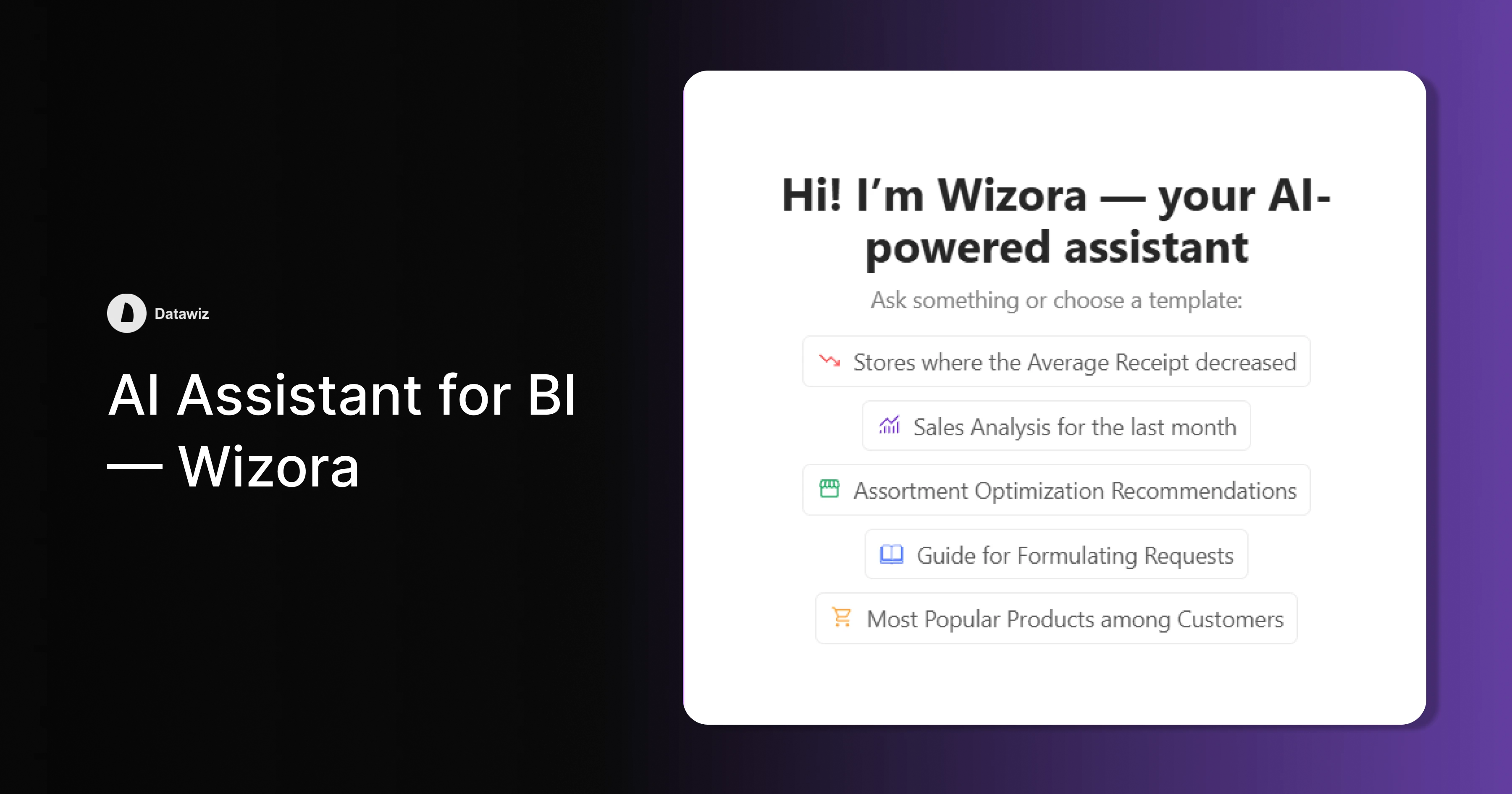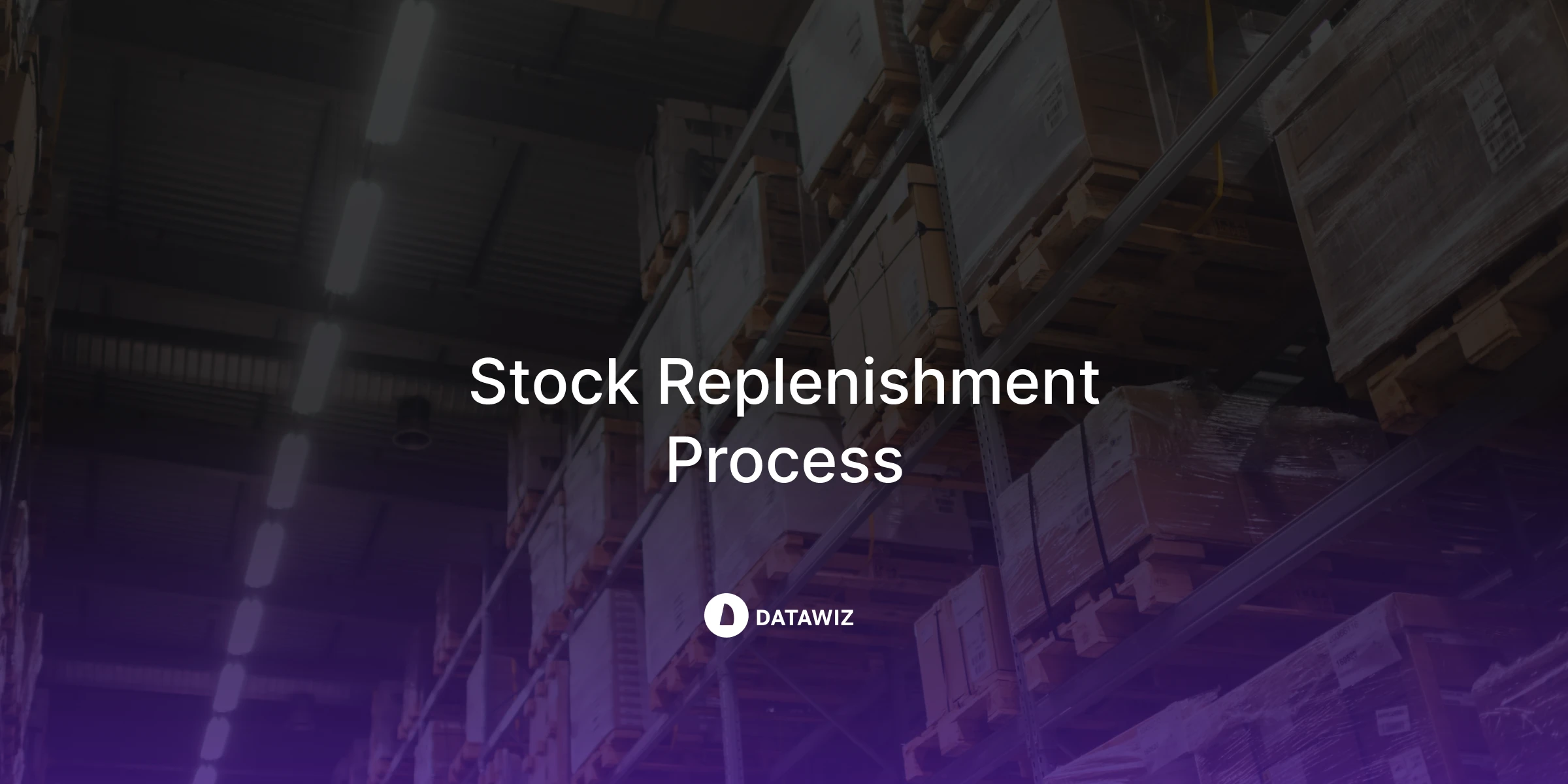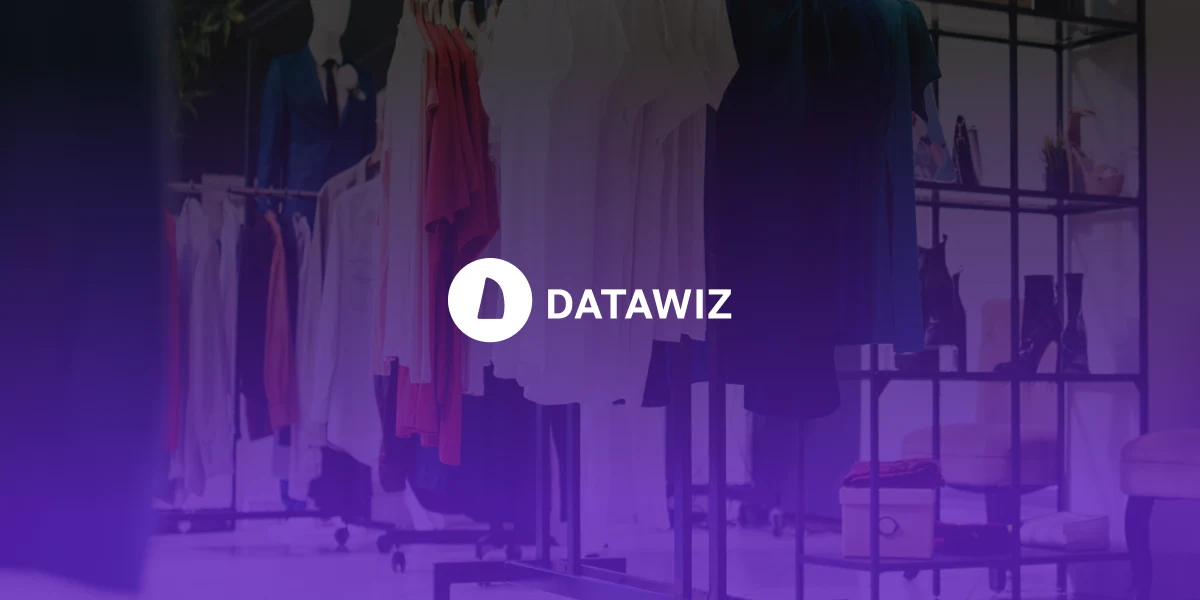AI in business intelligence (AI in BI) refers to the use of artificial intelligence technologies—such as machine learning, natural language processing, and predictive analytics—to enhance the way organizations collect, analyze, and act on their data. Instead of relying solely on static dashboards, AI-powered business intelligence tools can uncover patterns, forecast trends, and provide insights in real time. For example, solutions like Wizora by Datawiz integrate conversational AI into BI platforms, allowing users to ask questions in plain language and receive clear, data-driven answers instantly. This combination of AI and BI turns complex datasets into actionable insights that decision-makers can trust.
The Advantages of AI in BI
Real-time demand forecasting
AI models can process years of sales history alongside current market signals—such as holiday calendars—to anticipate demand before it shifts. This foresight allows businesses to act, not react. In a retail chain, a category manager might see that AI predicts a sharp rise in bottled water sales due to a coming heatwave. Acting early, they adjust orders and shelf space, preventing stockouts and maximizing sales during the peak.
Automated anomaly detection
Instead of relying on periodic reports, AI in business intelligence continuously monitors sales and inventory flows, flagging deviations the moment they appear. This enables instant intervention. For example, a store manager might receive an alert that sales of a top snack brand dropped 40% overnight in one location. On inspection, they find the display was moved to a low-traffic area—fixing it within hours, not weeks.
Hyper-personalized promotions
AI can link purchase histories with behavioral patterns to build precise customer segments, making marketing campaigns sharper and more relevant. A marketing manager could identify customers buying baby formula who are likely to purchase baby food in the coming month, enabling promotions that feel personal rather than generic—and increasing both conversion and loyalty.
Inventory optimization across the chain
By analyzing sell-through rates and location-specific demand, AI in retail can suggest when to move products between stores instead of letting them sit unsold. A supply chain manager might learn that a certain premium coffee is stagnating in two suburban branches but is selling out downtown. A quick redistribution balances inventory without extra procurement costs.
Executive-level clarity
AI-powered BI can condense complex datasets into concise, plain-language summaries that highlight both opportunities and risks. A CEO could receive a daily note: “Fresh produce sales rose 8% due to weekend promotions; frozen goods dropped 5% following a supplier delay.” This delivers a clear strategic picture without hours of dashboard analysis.
Dynamic pricing recommendations
Combining competitor pricing, sales velocity, and seasonal factors, AI can propose price changes that improve margin or clear stock efficiently. A pricing analyst might see a prompt to lower a slow-moving premium chocolate by 5% for one week. This small adjustment could free up shelf space and boost turnover without harming brand perception.
Natural language insights for faster decisions
AI allows managers to bypass manual report requests by simply asking questions in plain language. A regional manager might type, “Show the five lowest-performing categories over the past 30 days,” and receive an instant, visual breakdown—turning analysis from a multi-day process into a two-minute task.
AI vs. Traditional BI: How Datawiz and Wizora Transform Retail Decision-Making
Below is a focused, role-aware comparison across four core analytics types — descriptive, predictive, prescriptive / recommendations, and dashboards / reporting. For each area we contrast a typical traditional BI setup with an AI-powered approach built into a retail BI platform like Datawiz with its assistant Wizora. I keep examples concrete and tied to retail roles (category manager, marketer, supply chain, CEO).
Descriptive analytics — “what happened”
Traditional BI (Power BI / classic stack)
Relies on scheduled ETL jobs and prebuilt reports. Analysts or BI developers prepare queries and visualizations; ad-hoc questions require new report runs or custom SQL.
Common pain: a regional manager asks why a store underperformed last weekend — the team must pull logs, reconstruct filters and run manual checks; response can take days.
Maintenance burden: every new KPI or data source often requires developer time to integrate and validate.
AI-powered BI (Datawiz + Wizora)
Automated narrative generation and continuous monitoring turn raw events into readable summaries. Wizora can surface the key drivers (e.g., drop in footfall, promo under-execution, supplier delay) and explain them in plain language.
Role example: a regional manager receives an immediate, framed explanation — “Store B’s weekend revenue fell 18% because promotional POS material was not deployed and local footfall dropped 12% versus plan” — allowing same-day corrective action.
Benefit: reduces back-and-forth with analysts and shortens decision latency while keeping audit trails of why a conclusion was reached.
Predictive Analytics - “what will happen”
Traditional BI requires analysts to manually interpret historical sales data and run separate models to estimate future demand. This process is slow, resource-heavy, and often fails to adapt quickly to market changes. With AI-powered BI like Datawiz and Wizora, predictive analytics uses historical patterns to anticipate demand shifts — for example, seasonal peaks or the increase in sales ahead of major holidays. It provides accurate forecasts for recurring patterns, allowing managers to plan inventory, promotions, and staffing with confidence.
Prescriptive analytics / Recommendations — “what should we do”
Traditional BI
Recommendations are often manual: analysts produce lists (slow-moving SKUs, stores needing transfers) but do not generate actionable playbooks. Implementing suggestions requires separate coordination with operations.
Example pain: a pricing analyst identifies a clearance need in a store but must coordinate markdowns and reprice items across POS systems manually.
AI-powered BI (Datawiz + Wizora)
The system not only identifies opportunities but prescribes concrete actions: transfer quantities, promo windows, or targeted coupon lists. Wizora can calculate expected uplift, and queue actions for execution.
Role example: a supply chain manager receives a prioritized list of inter-store transfer moves with suggested quantities and timing; a marketing manager receives a segment list and suggested creative for a localized promotion.
Benefit: closes the loop from insight to action — fewer emails, less manual coordination, faster execution with measurable expected impact.
Dashboards & reporting — visualization and access
Traditional BI
Dashboards are static or semi-dynamic. Building a new view for a specific question often requires a BI developer or heavy dataset remodeling. End users learn to live with a fixed set of reports.
Example pain: a store operations lead needs a very specific cohort comparison (same-store 4-week trend vs new store). Creating that view involves dataset joins, filters and a ticket to the analytics team.
AI-powered BI (Datawiz + Wizora)
Natural language queries and conversational drill-downs let non-technical users ask complex questions and receive instant visualizations and explanations. Dashboards become interactive narratives, not just charts.
Role example: a CEO types “compare last month’s promotion ROI in the North region vs South and show top three drivers” and immediately gets a concise visual answer plus a short recommendation from Wizora.
Benefit: democratizes analytics, reduces backlog for BI teams, and lets leaders focus on decisions rather than data assembly.
AI Assistant for BI — Wizora
Wizora is the AI assistant built directly into the Datawiz BI platform, designed specifically for retail decision-making. Unlike generic AI tools, it works with your actual sales, inventory, and store performance data — so every insight is grounded in reality, not assumptions. Wizora lets managers and category specialists skip manual report digging: you simply ask a question in plain language and get a clear, data-backed answer within seconds.
With Wizora, you can:
- Save time by replacing manual report checks with instant AI responses.
- Explore trends, anomalies, and sales drivers without deep technical skills.
- Make faster, data-driven decisions based on actual store performance.
Examples of questions you can ask Wizora:
“What’s the projected revenue by store compared to our kpi?”
“Which products had the biggest sales drop this month?”
“How many loyalty customers visited the store this week?”
“When should I reorder product based on current trends?”
With AI-powered capabilities at the core of Datawiz BI and the smart, conversational insights from Wizora, retailers can finally turn their business intelligence into actionable strategies — faster, sharper, and with complete confidence in every decision.
 What's new?
What's new?




 No credit card required
No credit card required